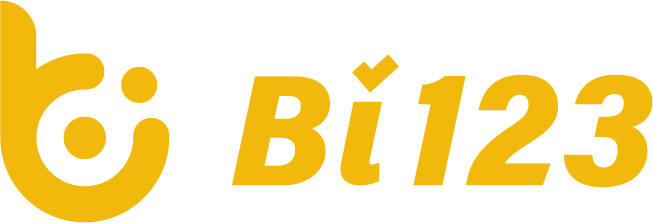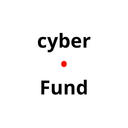
Qtum
- #Hong Kong concept
- #PoS
- #Smart Contract Platform
- #Binance BUSD
- 3.251
- $52.08M
- $342.68MRank #206
- 105.41M
- Spot Markets
- Overview
- Market Data
Similar News
More Info- 06-04 10:00
The Binance World Championship Special: Trade $100 Each on Convert, Spot & Futures To Win...
- 06-03 22:00
MiCA Stablecoin Rules Implementation Announcement
- 06-03 10:15
Word of the Day: Test Your Knowledge on Life in Binance to Earn Binance Points...
- 05-31 15:00
Updates on Minimum Order Size for Spot and Margin Trading Pairs (2024-06-07)
- 05-30 21:28
Binance Futures Will Launch USDT-Margined TURBO Perpetual Contract With Up to 50x Leverage
Market Signal
More InfoCryptocurrency Calendar

NO DATA
What Is Qtum (QTUM)?
Qtum (pronounced ‘“quantum”) is a [proof-of-stake] (PoS) smart contract open-source blockchain platform and value transfer protocol. It aims to bring together the strengths of [Bitcoin ]and [Ethereum ]in one chain. Qtum is built on Bitcoin's UTXO transaction model, with the added functionality of smart contract execution and [DApps]. Recently, the platform added support for DeFi applications. As of March 2021, there are more than 20 tokens created on the Qtum blockchain.
To learn more about this project, check out our deep dive of [Qtum].
The project was announced in March 2016 and held an ICO a year after, in March 2017, which brought its founders $15 million USD. The Qtum main chain was released on Sept.13, 2017. Initially, the Qtum coin was issued as a ETH-20 token, but with the launch of the mainnet, it was converted to native blockchain.
Who Are the Founders of Qtum?
Patrick Dai is the project’s founder and the chairman of the Qtum Foundation. He studied computer science in Draper University and then dropped out of PhD from the Chinese Academy of Sciences. He started his career as a product manager at Alibaba and then worked on a series of blockchain projects, including Factom, Vechain, Bitse Group and Meilink before starting Qtum in 2016.
The other two co-founders are the CTO and blockchain architect Neil Mahi and lead developer Jordan Earls.
Many of the team members listed on the Qtum official website seem to not have an active Linkedin page or a Github profile. It is confirmed though that Qtum has several high-profile backers, including the Bitcoin.com’s Roger Ver and Jeremy Gardner, an early crypto investor turned skincare professional, co-founder of Augur and EIR in Blockchain Capital.
What Makes Qtum Unique?
Qtum is a general purpose blockchain that tries to address four issues its founders found most problematic in BTC and ETH blockchain platforms: interoperability, governance, rigidity and costliness of proof-of-work mechanism and difficulty of connecting smart contracts with real life applications. The Qtum blockchain has two unique technologies that aim to solve that: Account Abstraction Layer (AAL) and Decentralized Governance Protocol (DGP).
The Account Abstraction Layer integrates the UTXO (Unspent Transaction Output) account layer inherited from Bitcoin with the smart contract layer, inspired by Ethereum. It allows users to build applications and host them on virtual machines, including the Ethereum Virtual Machine (EVM), and the x86 virtual machine. It also supports i686 instruction set and several programming languages like C, C++, Rust and Python, which makes it very easy to adopt existing apps and compile for Qtum. Not only does it allow turing-complete smart contracts, Qtum also plans to integrate common programming libraries in the form of smart contracts.
The Decentralized Governance Protocol allows smart contracts to change the core parameters of the network such as block size and gas fees without ever needing to hard fork the blockchain, which may save a lot of trouble as the network is evolving. Miners (stakers), developers and QTUM holders within the entire ecosystem are involved in blockchain governance through voting, and the blockchain can realize self-management, upgrades and iteration.
Related Pages:
Take a good look into [Ethereum], the first cryptocurrency, supporting smart contracts.
How well do you know Cardano? Be sure not to miss our [deep dive.]
Ready to learn more? Visit our [learning hub].
Check out our [blog] for the latest crypto news and insights.
How Many Qtum (QTUM) Coins Are There in Circulation?
According to the Qtum whitepaper, the initial supply of QTUM coins was 100 million, all of which were minted instantly before the project went online. 51 million coins were sold to the public through an ICO process in March 2017. Over that, 8 million coins went to the early private investors and 12 million were allocated to the project team with a four-year lock-up. The rest is controlled by the Qtum Chain Foundation, a non-profit company registered in Singapore, which will receive it in four parts by March-2021. These are 20 million coins allocated for business development purposes and 9% for academic research and promotion.
The coin supply is not fixed, new tokens can be mined with block reward halving every four years from the initial block reward subsidy of 4.0 QTUM per block, going through seven halvings to eventually reaching zero by year 2045, when the maximum supply will reach 107,822,406 QTUM.
How Is the Qtum Network Secured?
The technical approach to Qtum is not the same as Bitcoin and Ethereum currently use. Qtum chose the MPoS (mutualized proof-of-stake) consensus mechanism for network security. It is a modified version of [Proof-of-Stake 3.0].
The protocol incentivizes users to keep their coins locked to facilitate and secure the block validation. This is called staking. Confirming each block is a competition between coin holders, where based on connectivity to the network and random chance they get to right to validate the block. Unlike the early PoS protocols, here the block reward is constant and does not depend on coin age for determining the likeliness of getting it. The rewards are spread proportionally to the stake, so the more coins are staked, the more reward the user gets. On top of that, the MPoS protocol is protected against “junk contract” attacks by splitting 10% of the block reward between the block producing miner and nine previous miners and delaying the remaining 90% by 500 blocks in the future.
Unlike the proof-of-work mechanism used in Bitcoin, the proof-of-stake algorithms are significantly less costly to maintain, are more environmentally friendly and can provide a great deal of decentralization, which is the cornerstone of blockchain security.







